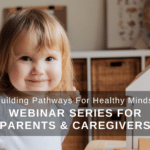Problem solving, conflict resolution, and decision making all rest on the ability to think about consequences. Children learn best when they are allowed to see the consequences of their actions. As Becky Bailey (2000) explains, “Consequences help children think about the effects of their choices, then draw conclusions about the wisdom of their actions” (p. 228). They risk, fail, and realize that certain actions do not result in desired outcomes and then try again. Or, they feel proud of the successes resulting from their own decisions. These are the skills that build responsibility, competence, and ultimately resilience (Cline & Fay, 2006; Ginsburg & Jablow, 2011).
Learning Through Consequences
Allow your children to make choices and solve problems early in life. A parent’s role is to prepare children for the real world. However, many parents would rather see children succeed than fail, so they tend to step in to save children by making decisions for them. Provide ample opportunities for your children to make choices early on in life such as deciding between toys, outfits, and snacks. This builds their confidence and allows them to feel comfortable with decision-making and problem-solving skills, which are critical in their future lives.
Let your children experience the consequences of their actions. Help your children realize that each action has a result, either positive or negative. Allowing your children to make decisions and then face the consequences of their actions prepares them for making better choice as teenagers and adults. When your children make poor choices, lovingly help them see the consequences of their choices and discuss how the outcome could have been different had they made a better choice. Lecturing, punishing, and criticizing send a negative message that they are incompetent and need others to make decisions for them. This can lead to a fear of failure and may prevent your child from making future decisions.
Have confidence in your children. When children know you believe in them, they are more likely to live up to those expectations. Reassure your children that you believe in them, and encourage them.
Intervene as necessary to keep children safe. Make sure to intervene if there is immediate danger (such as a child running out into the street when a car is coming), or when there is a risk of long-term damage from the choice (such as developing cavities from not brushing teeth).
References
- Bailey, B. A. (2000). Conscious discipline: 7 basic skills for brain smart classroom management. Orlando: Loving Guidance, Inc.
- Cline, F., & Fay, J. (2006). Parenting with love and logic: Teaching children responsibility. Colorado Springs, CO: NavPress Publishing.
- Ginsburg, K. R., & Jablow, M. M. (2011). Building resilience in children and teens: Giving kids roots and wings. Elk Grove Village, IL: American Academy of Pediatrics.






